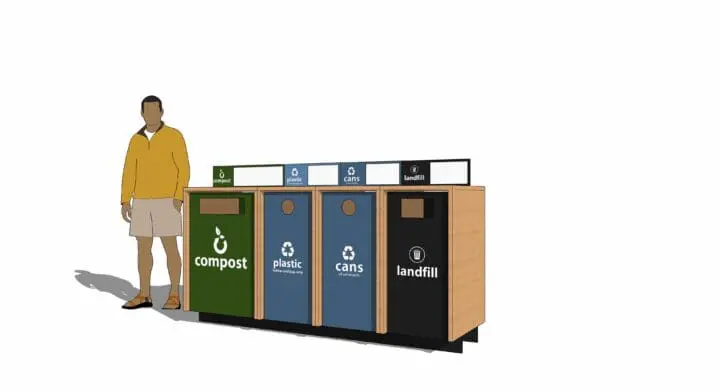
Investigation: Net Zero Waste in Dining Facilities
This paper focuses on waste diversion strategies implemented at Georgia Institute of Technology’s recently built West Village Dining Commons to identify lessons learned and design considerations for architects.
April 16, 2025 | Posted by Katie Cavazos, Malte Weiland, Ryan Yaden, Heather Holdridge
EPA defines net zero waste as “reducing, reusing, and recovering waste streams to convert them to valuable resources with zero solid waste sent to landfills over the course of the year” (4). Some universities in the United States are tackling this problem head-on: The Georgia Institute of Technology, for example, is aspiring by 2030 to divert 95% of campus waste including pre-consumer, post-consumer and construction waste.
As you are finishing your meal, you can plan your exit strategy with your waste.Malte Weiland
Senior Sustainability Project Manager at Georgia Tech

Disposal Bin Prototype
The prototype bins have been designed in response to lessons learned from the post occupancy waste audit at Georgia Tech’s West Village Dining Commons. They are intended to be standalone or grouped as needed, providing flexibility for the end users. The colors and graphics are easily recognizable from afar using Recycle Across America’s standardized labels. At the top of the bin there is a space provided for customizable graphics, such as images of actual trash produced in the space. The design is ADA accessible, comes in two different widths, and allows for cart access when required.